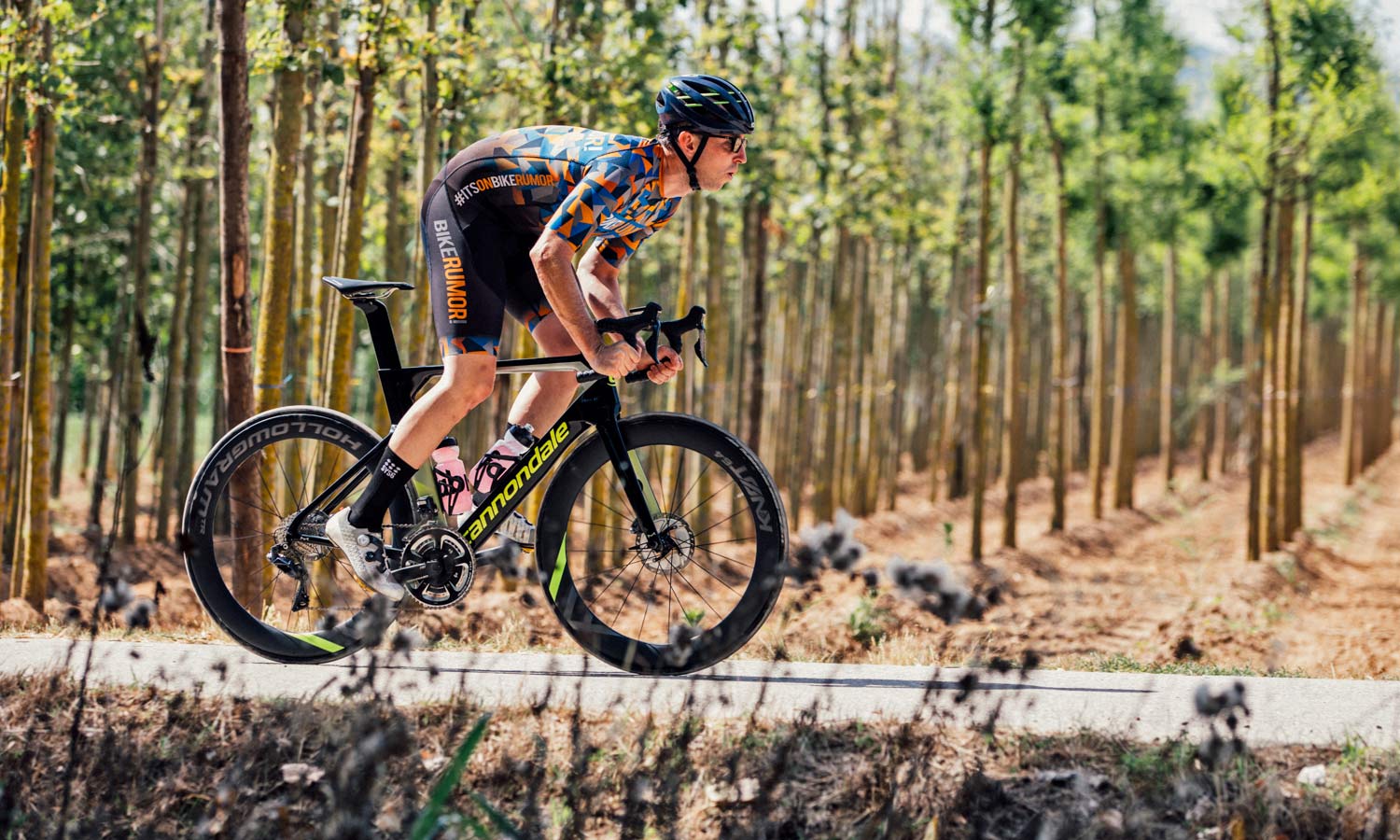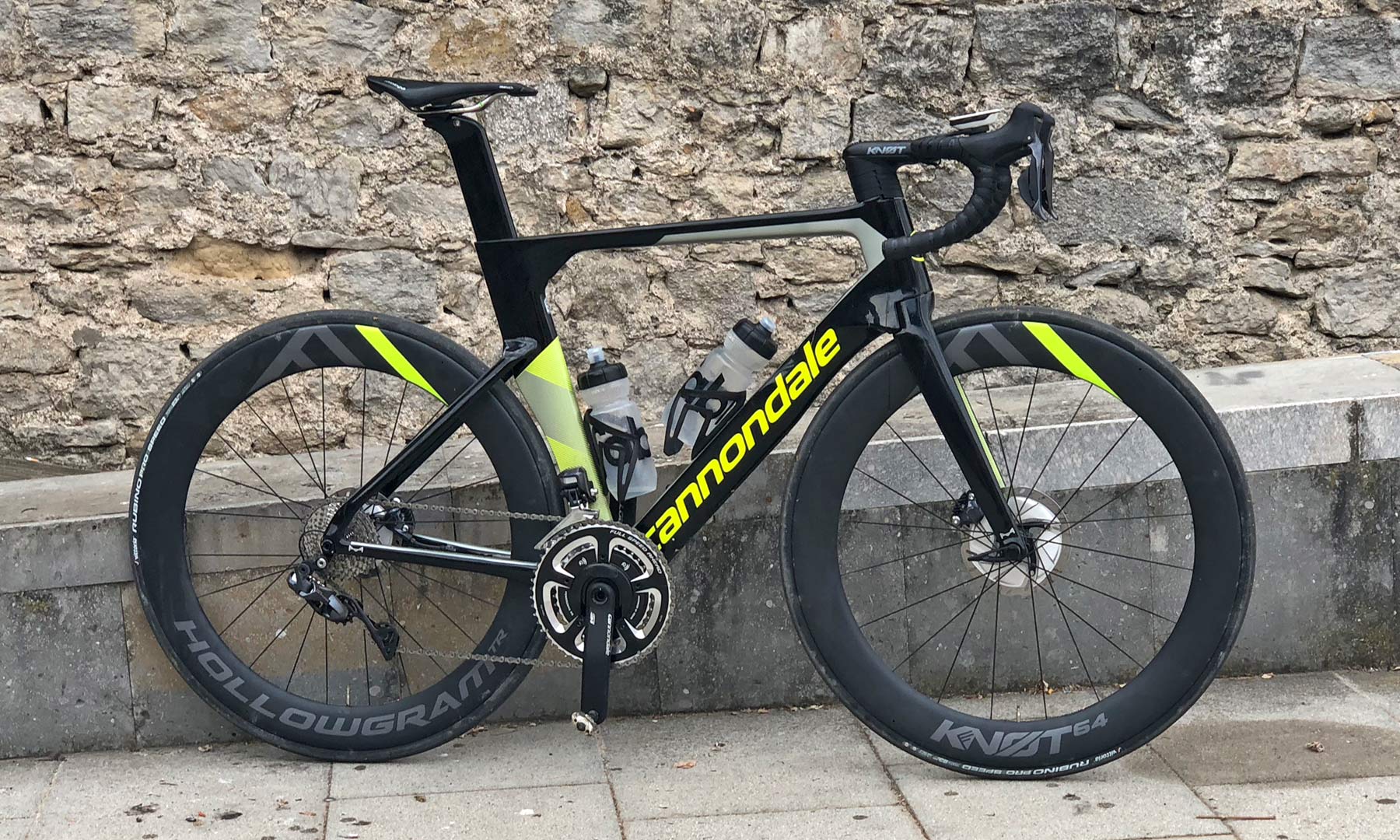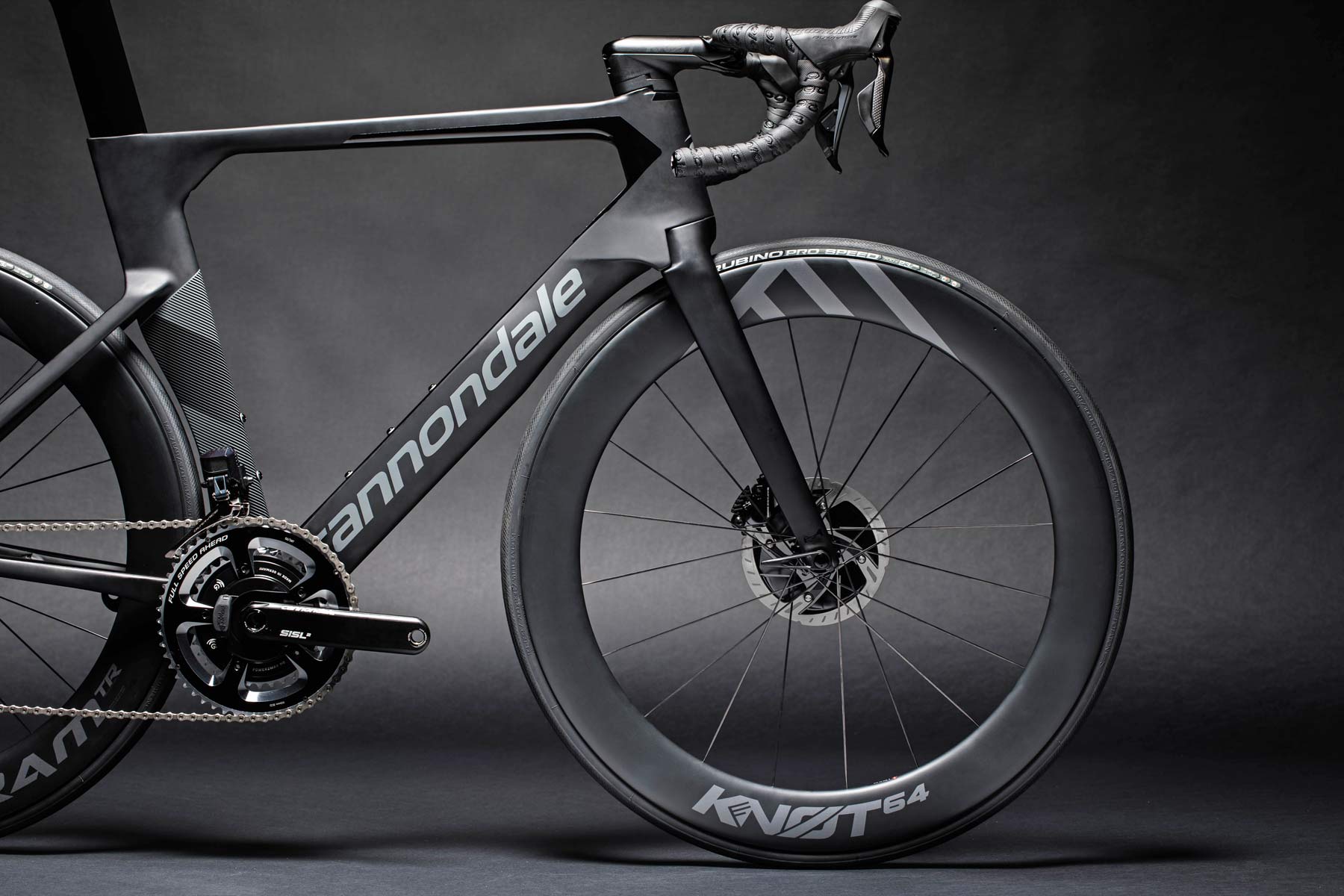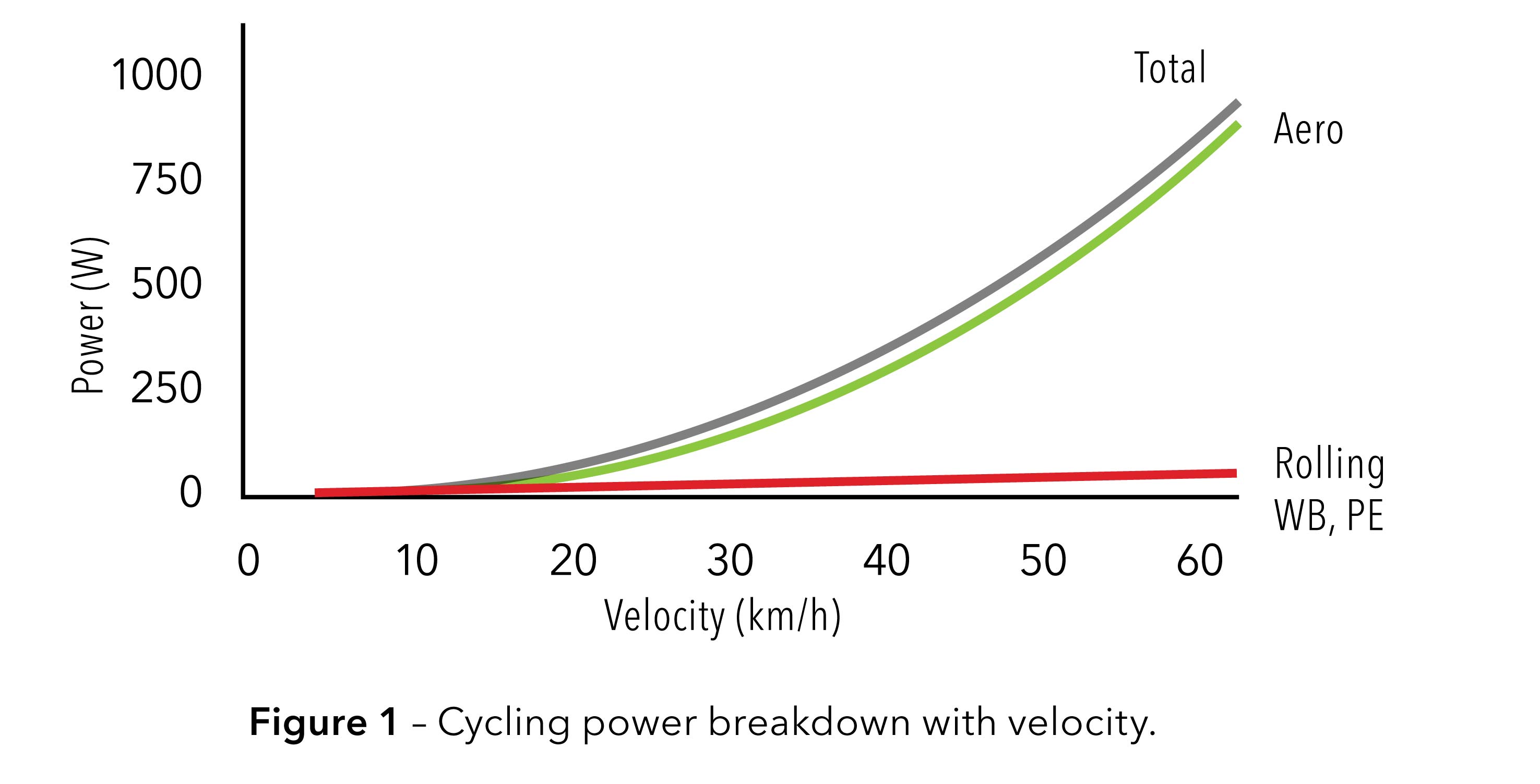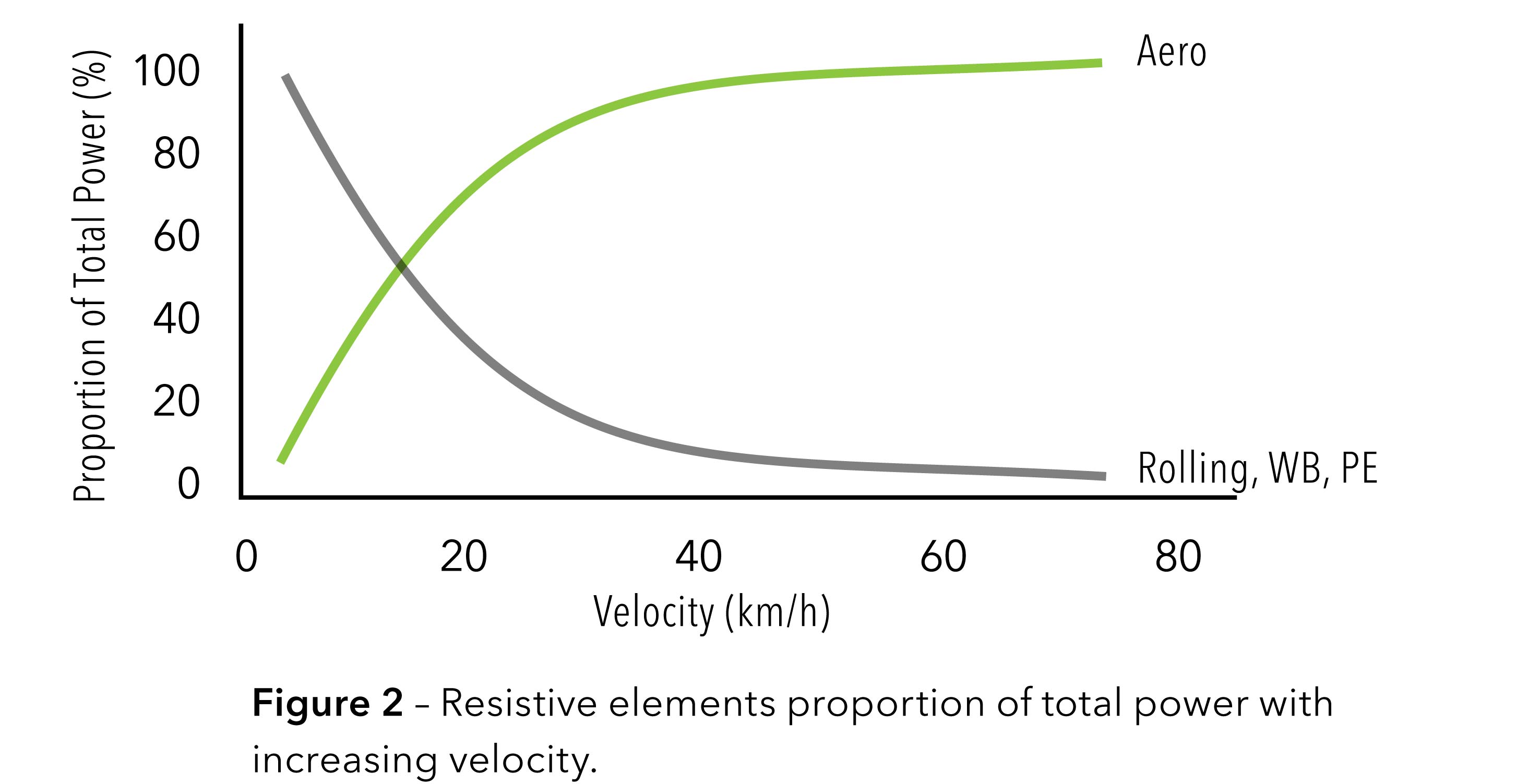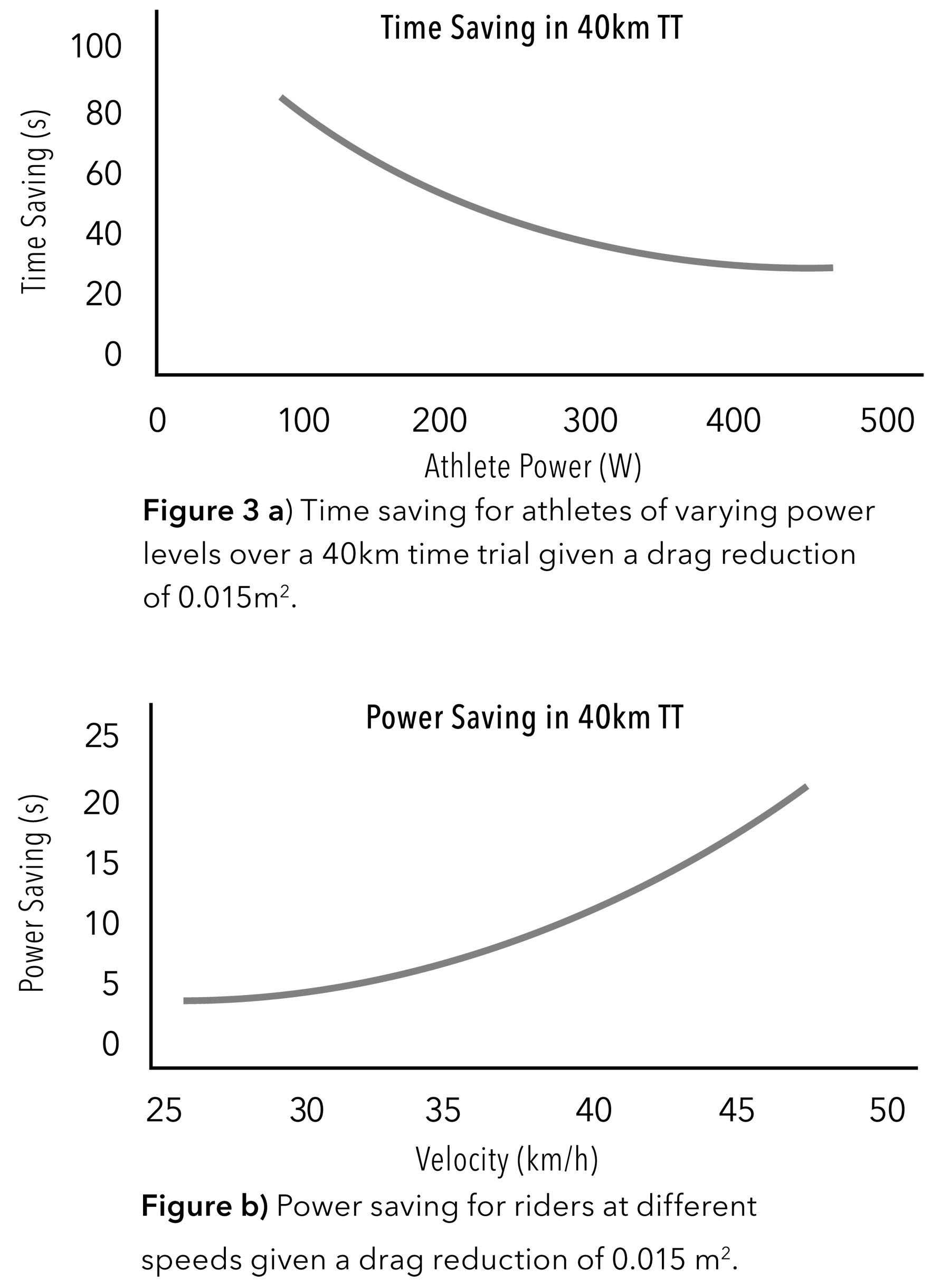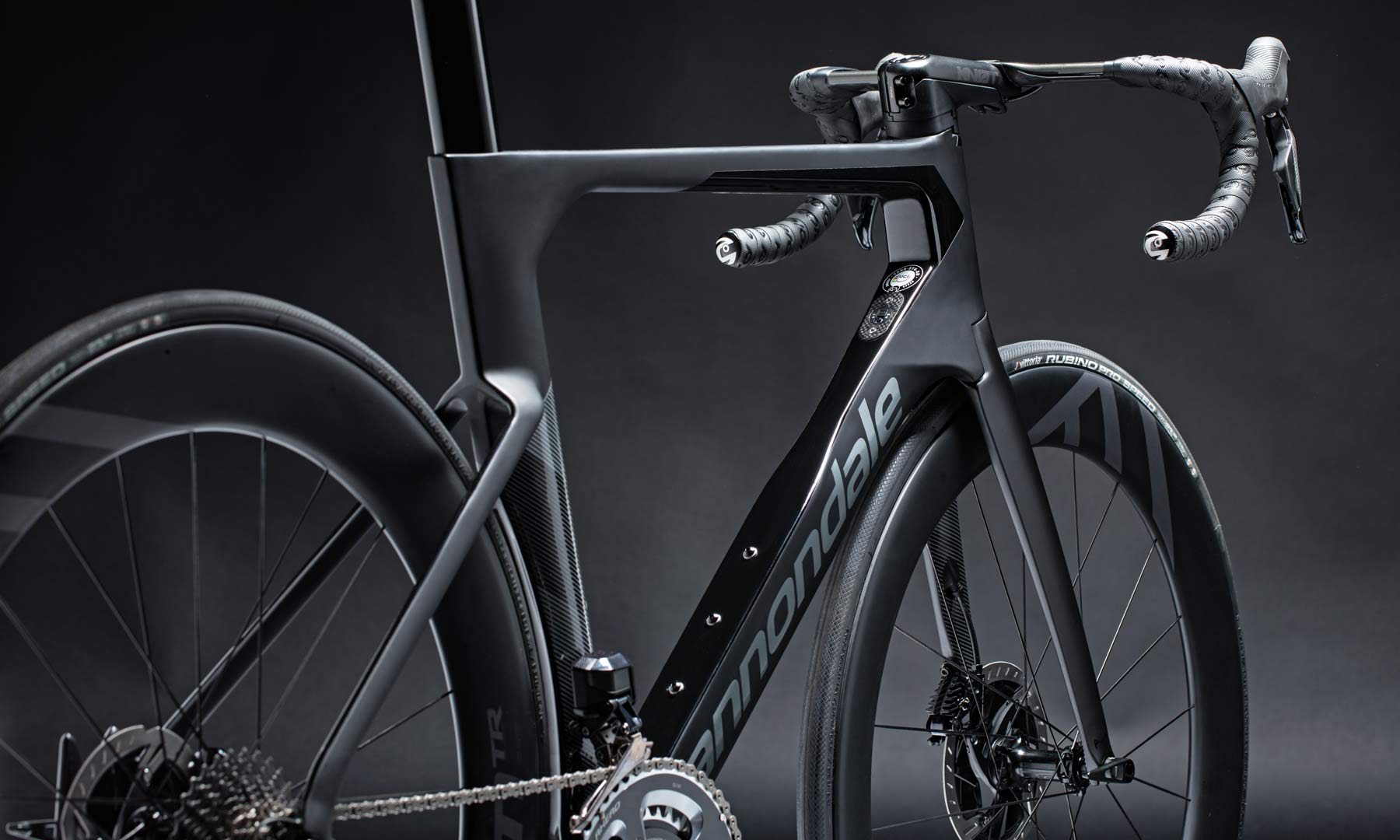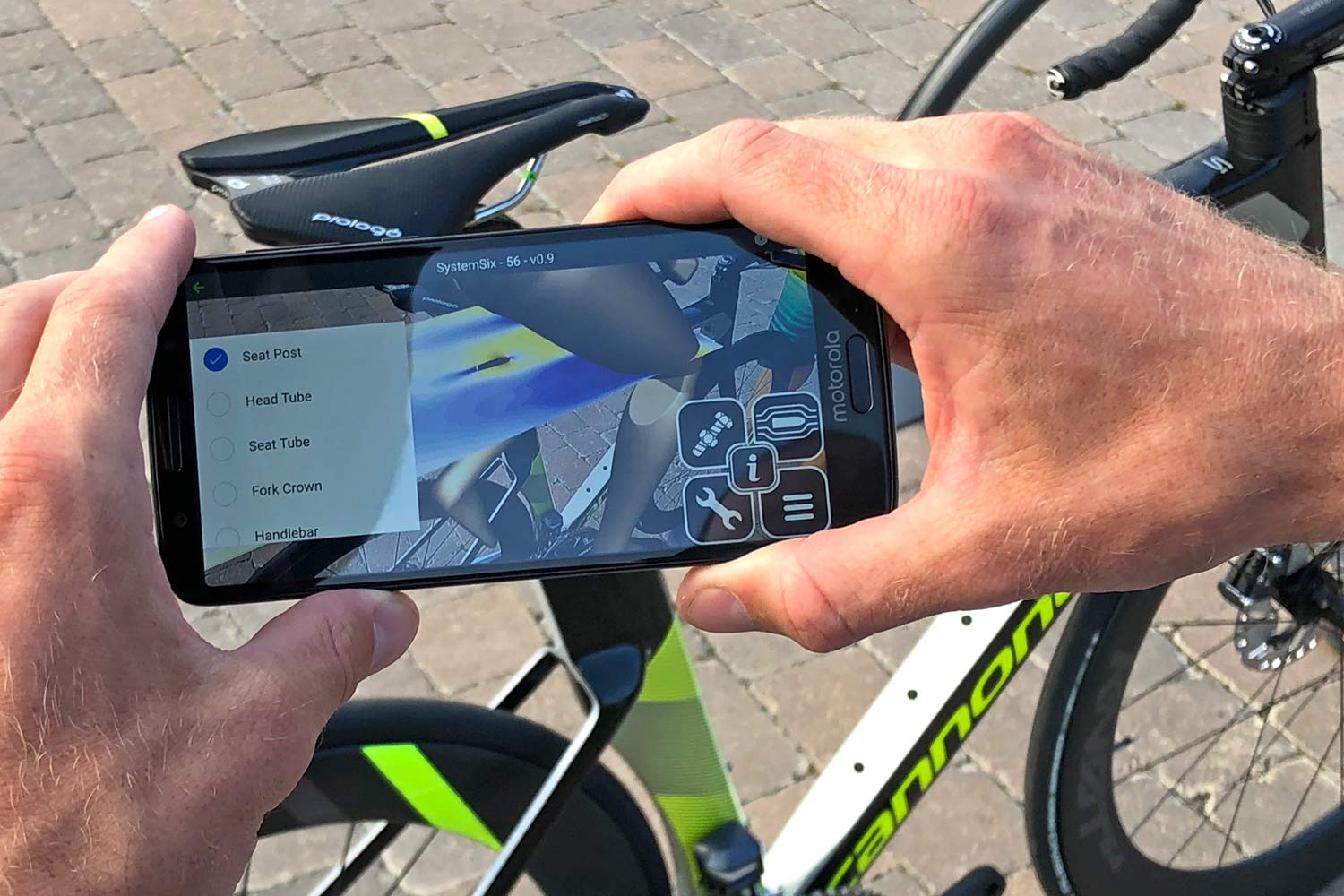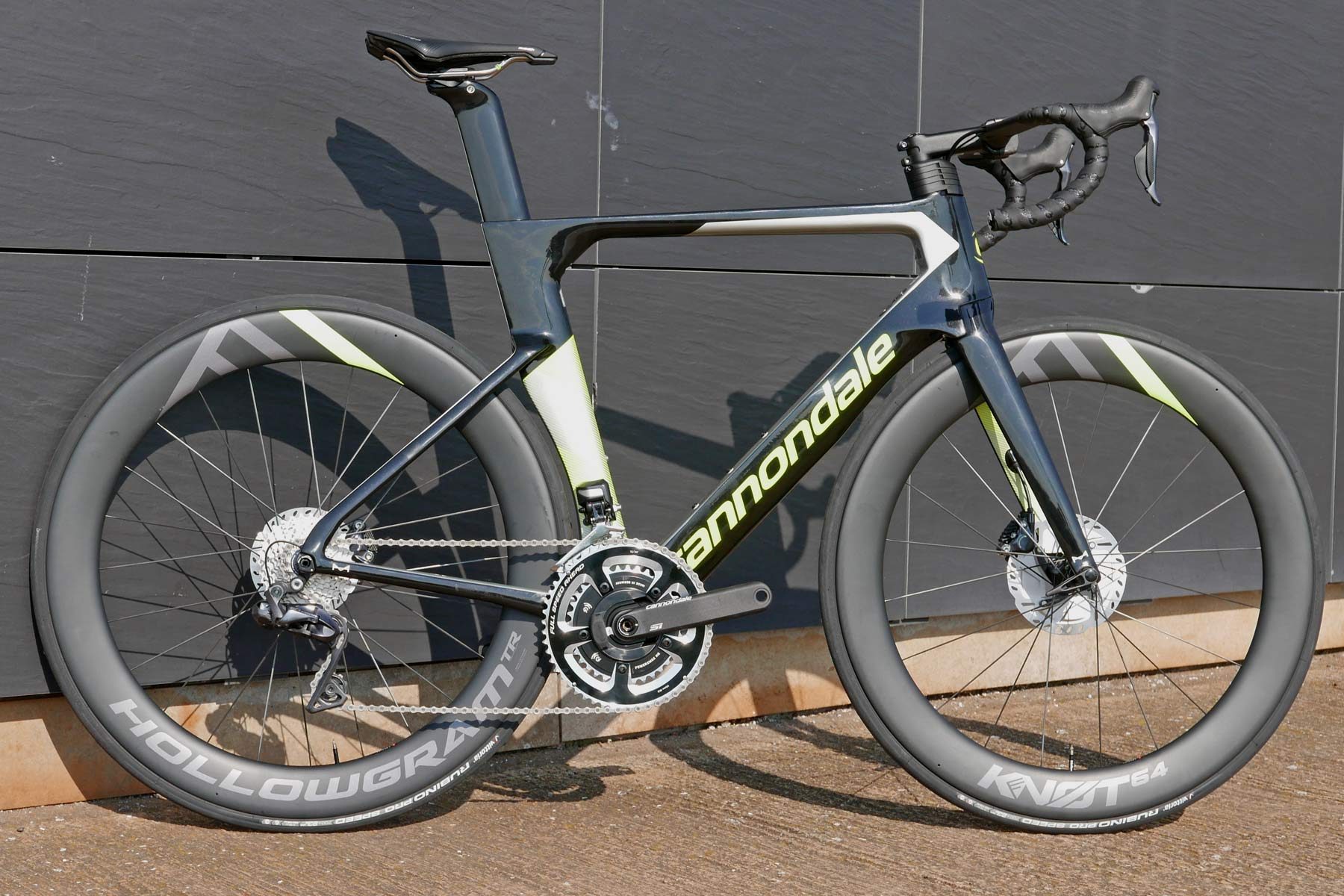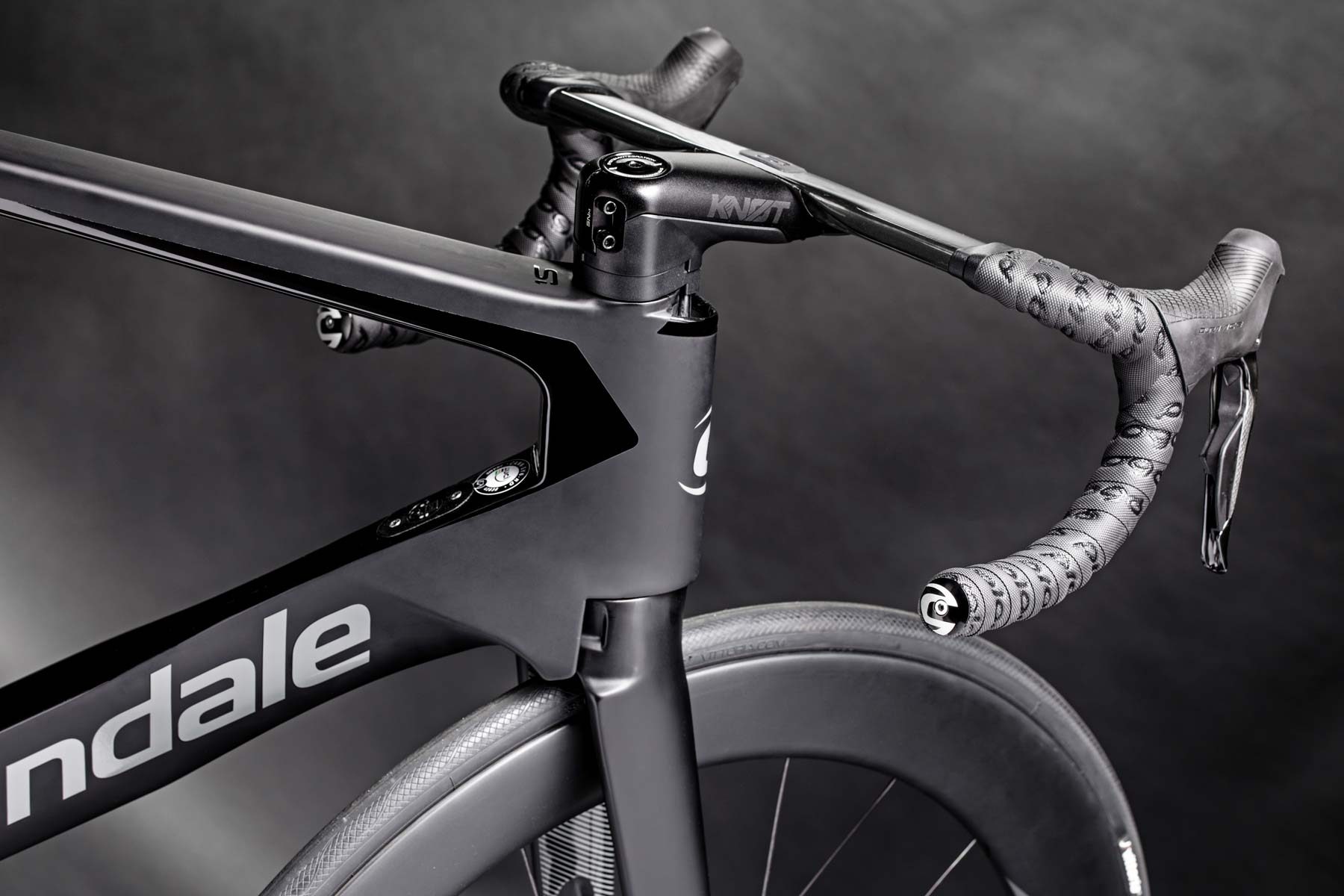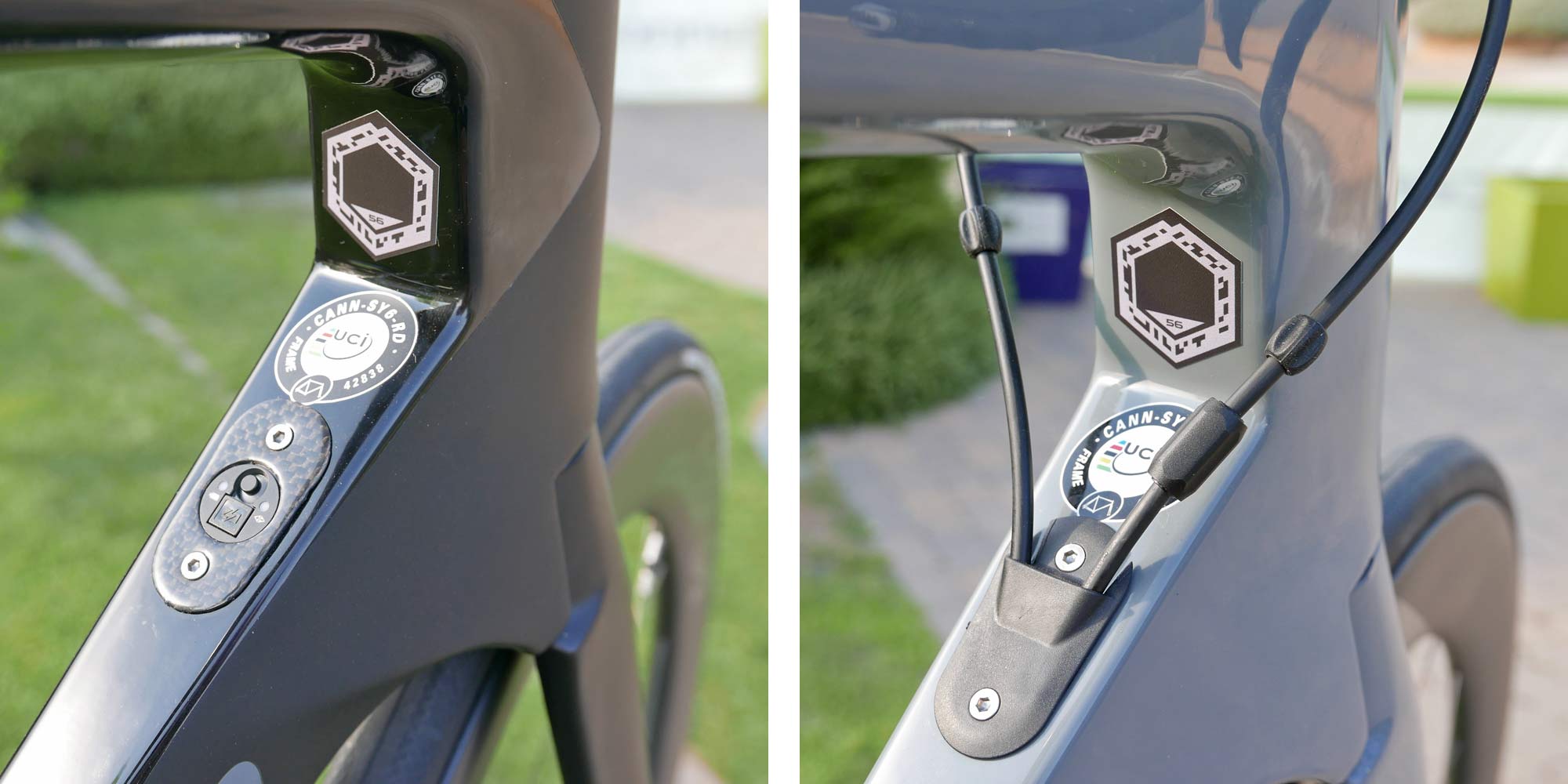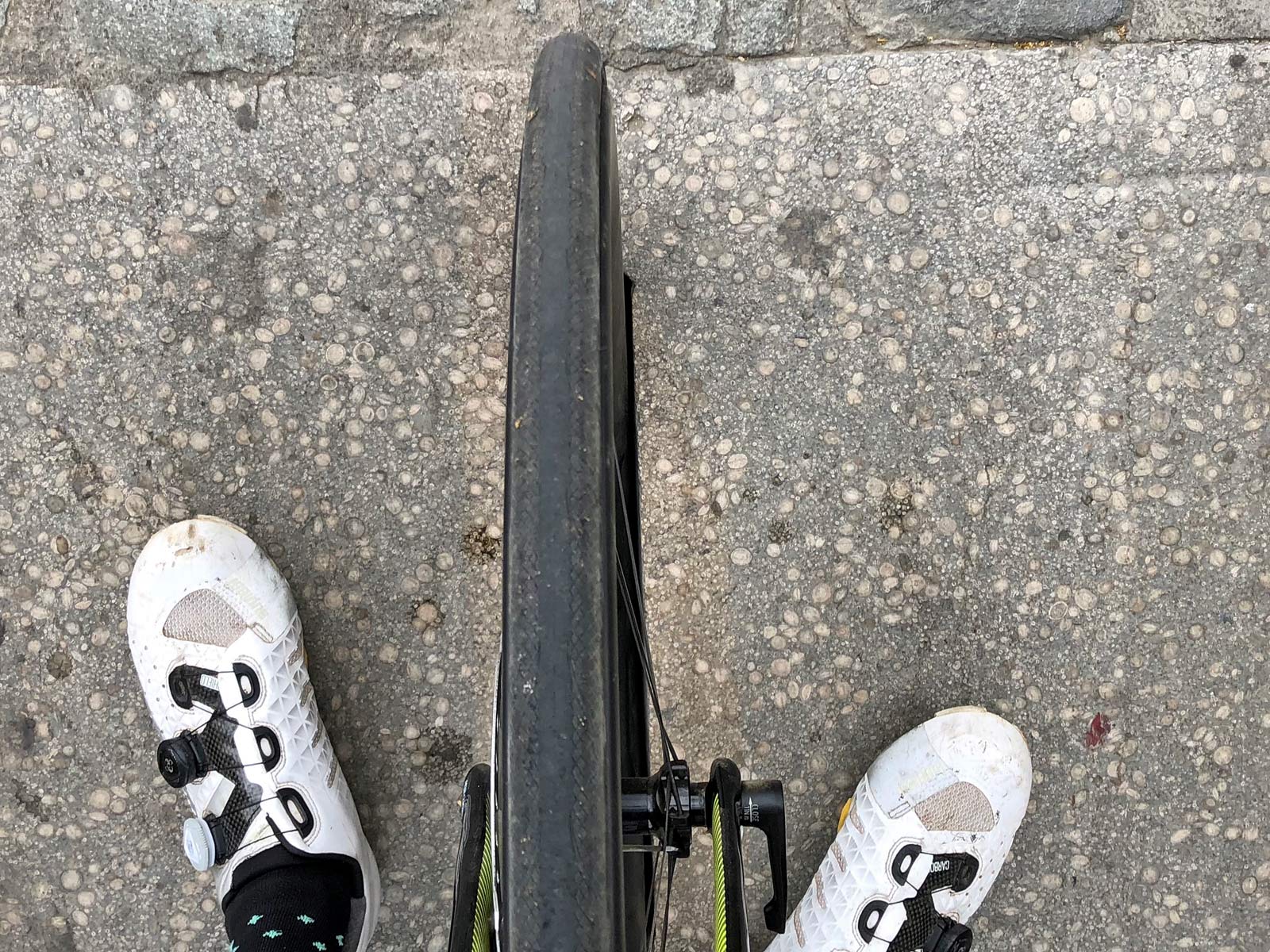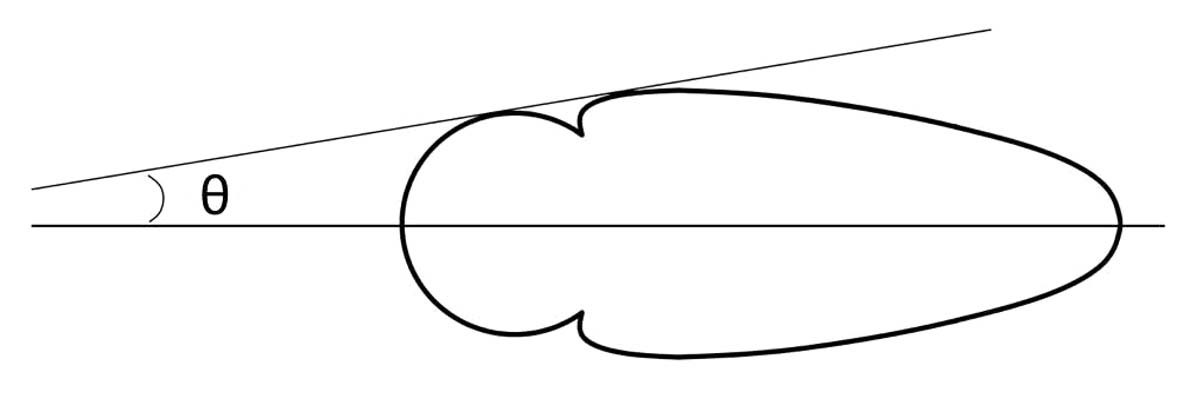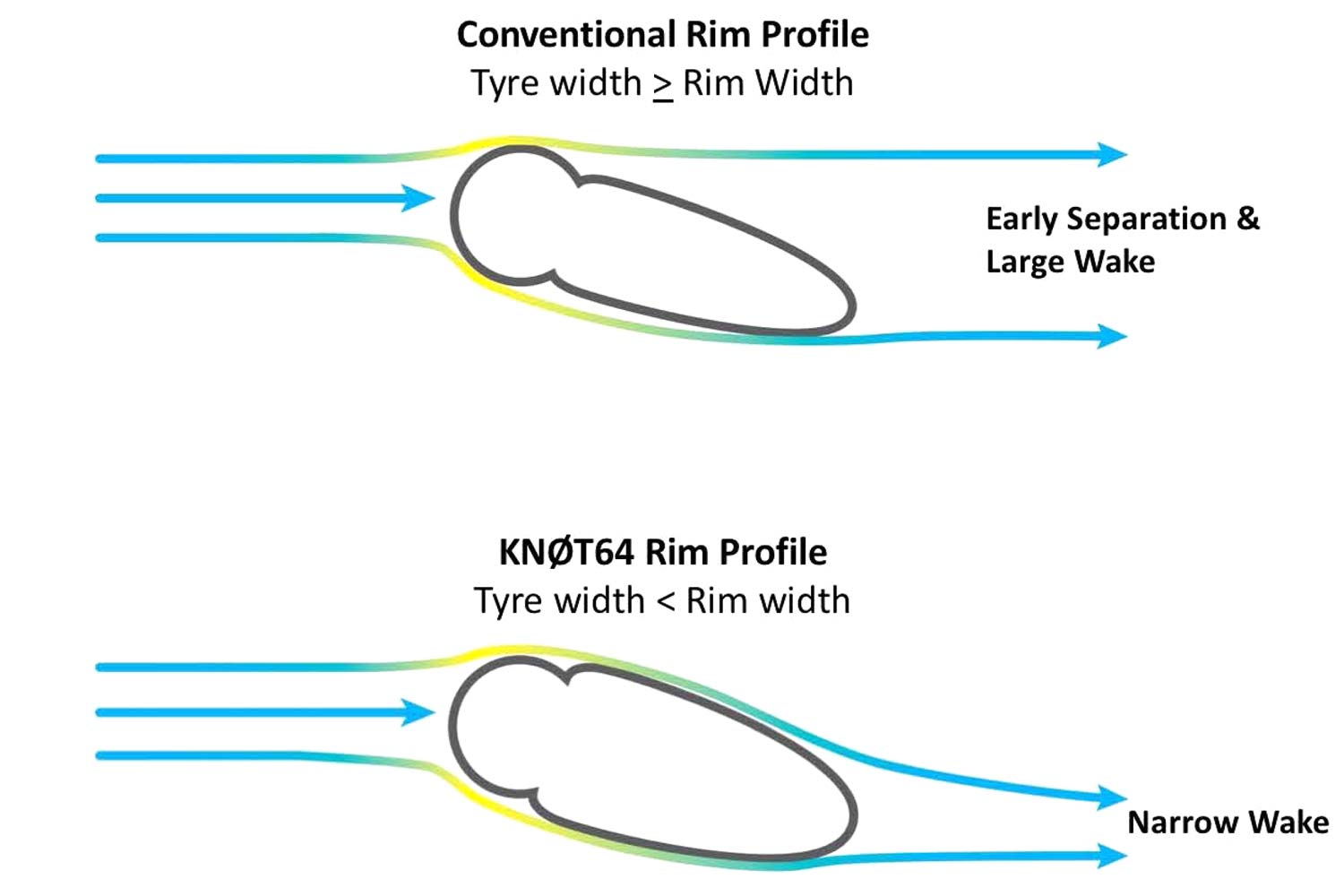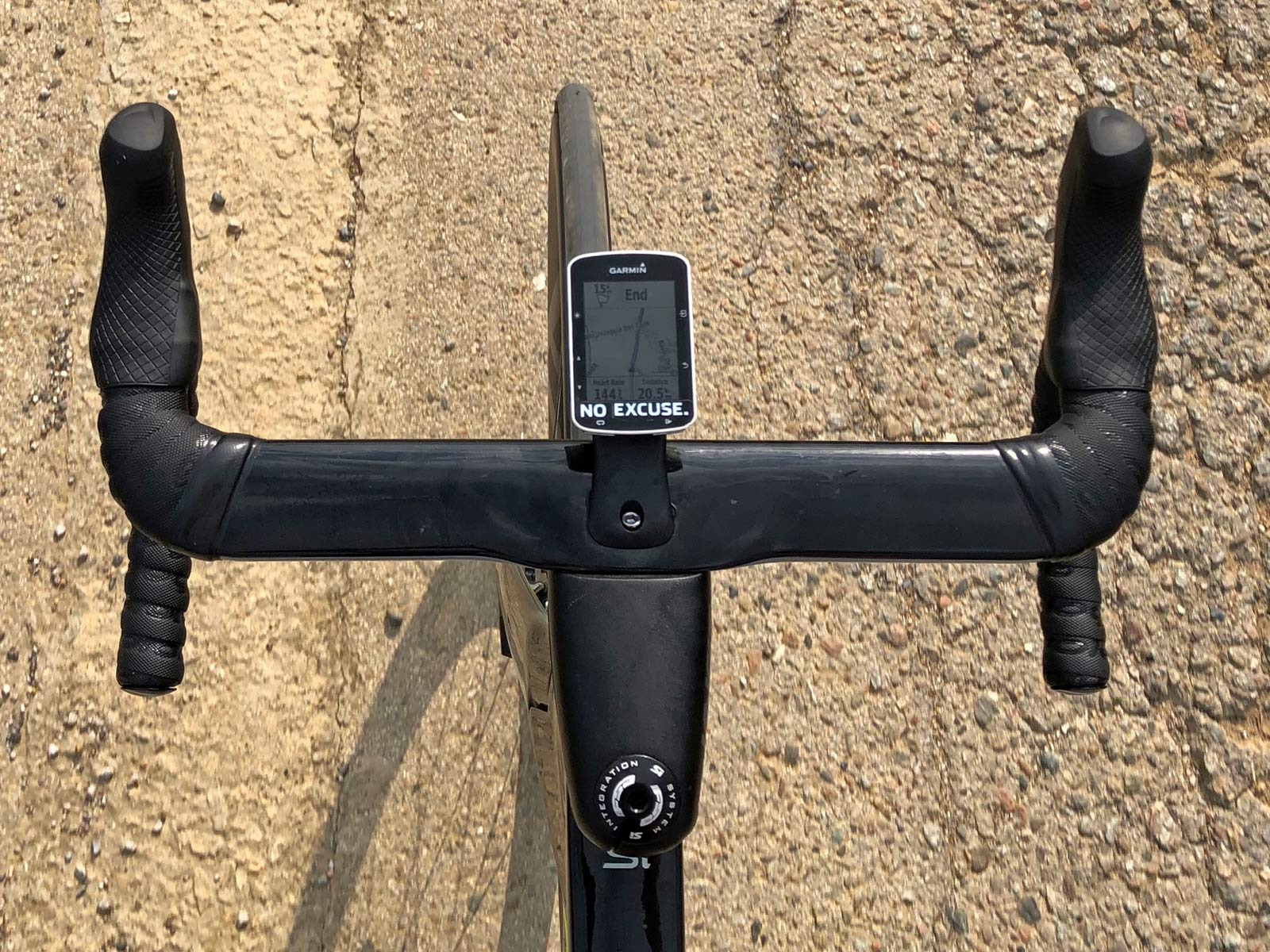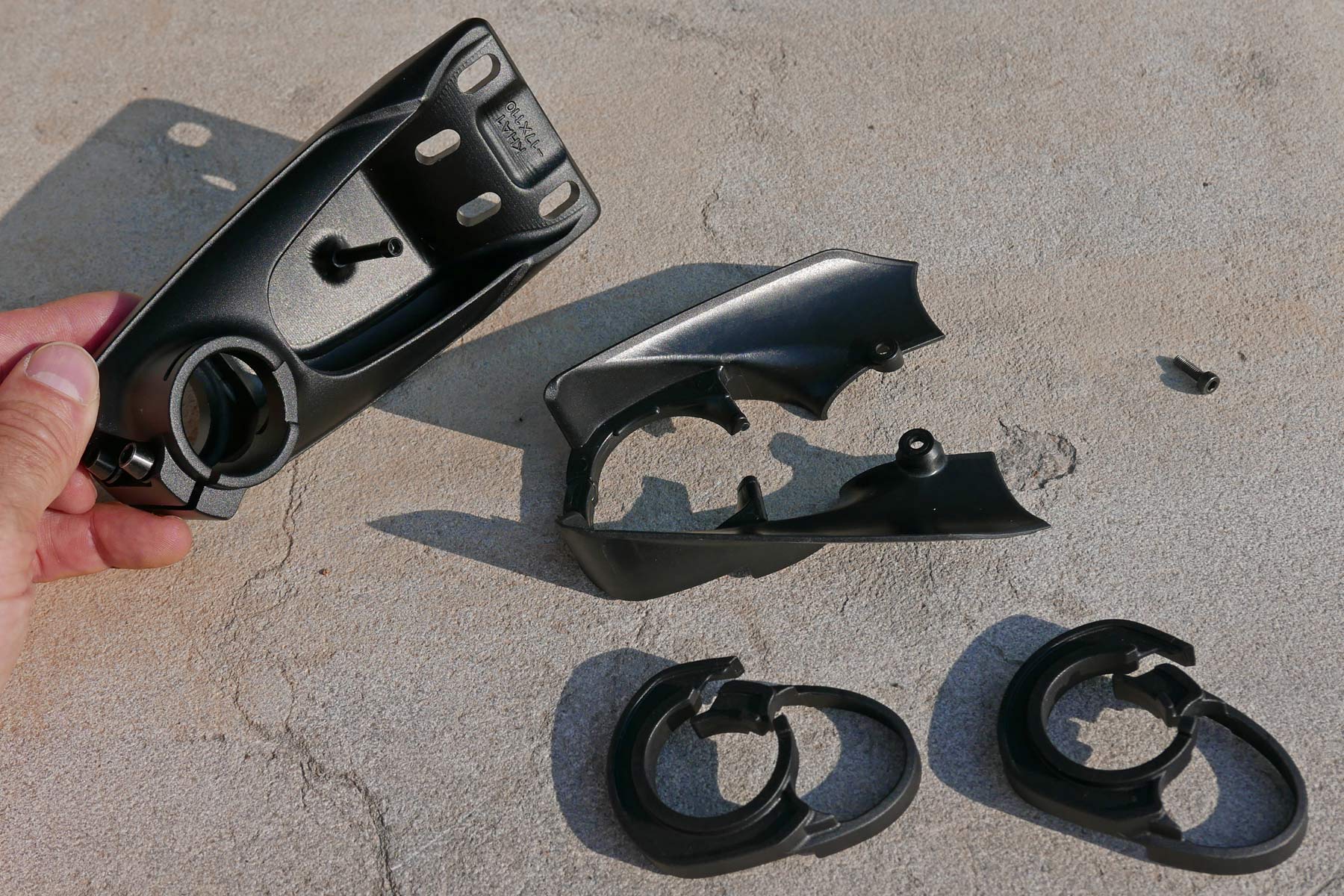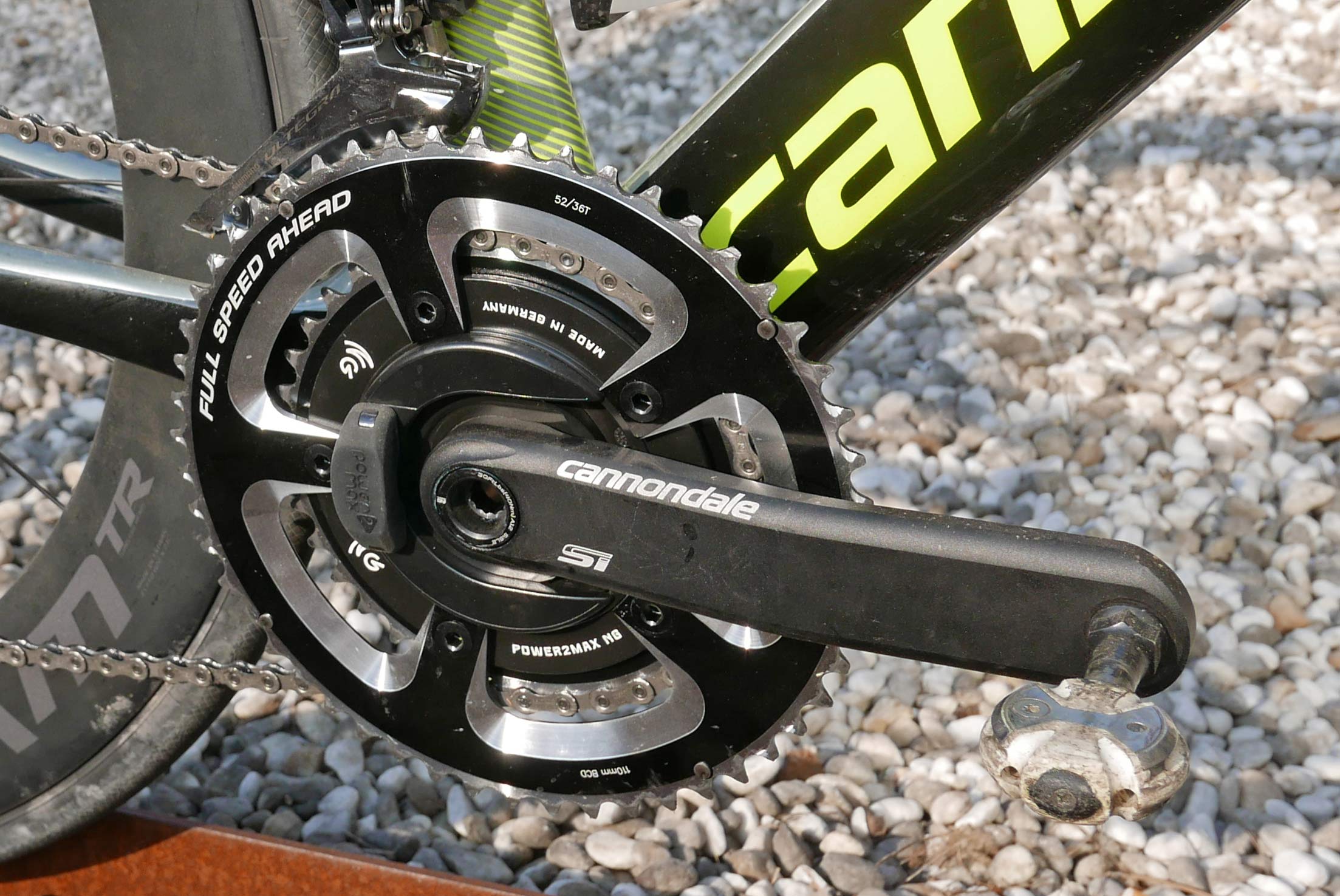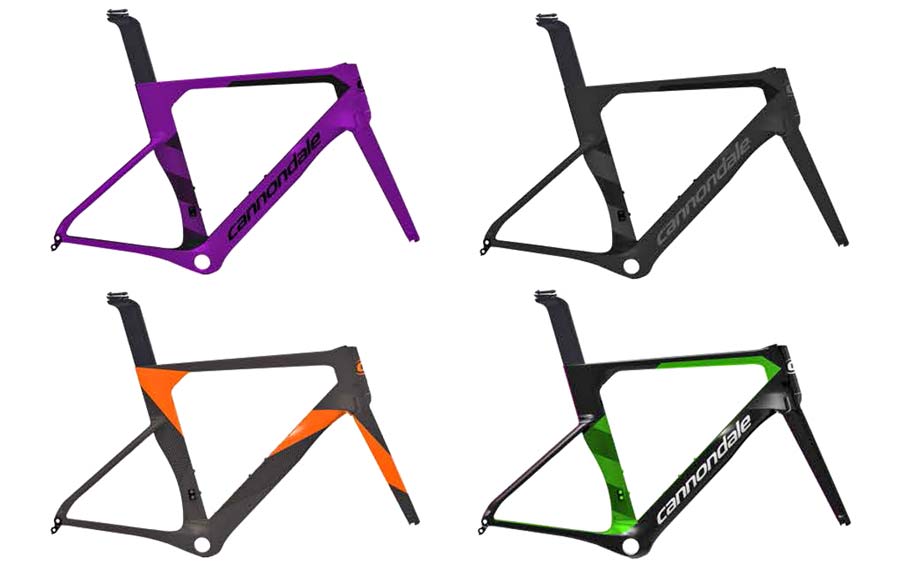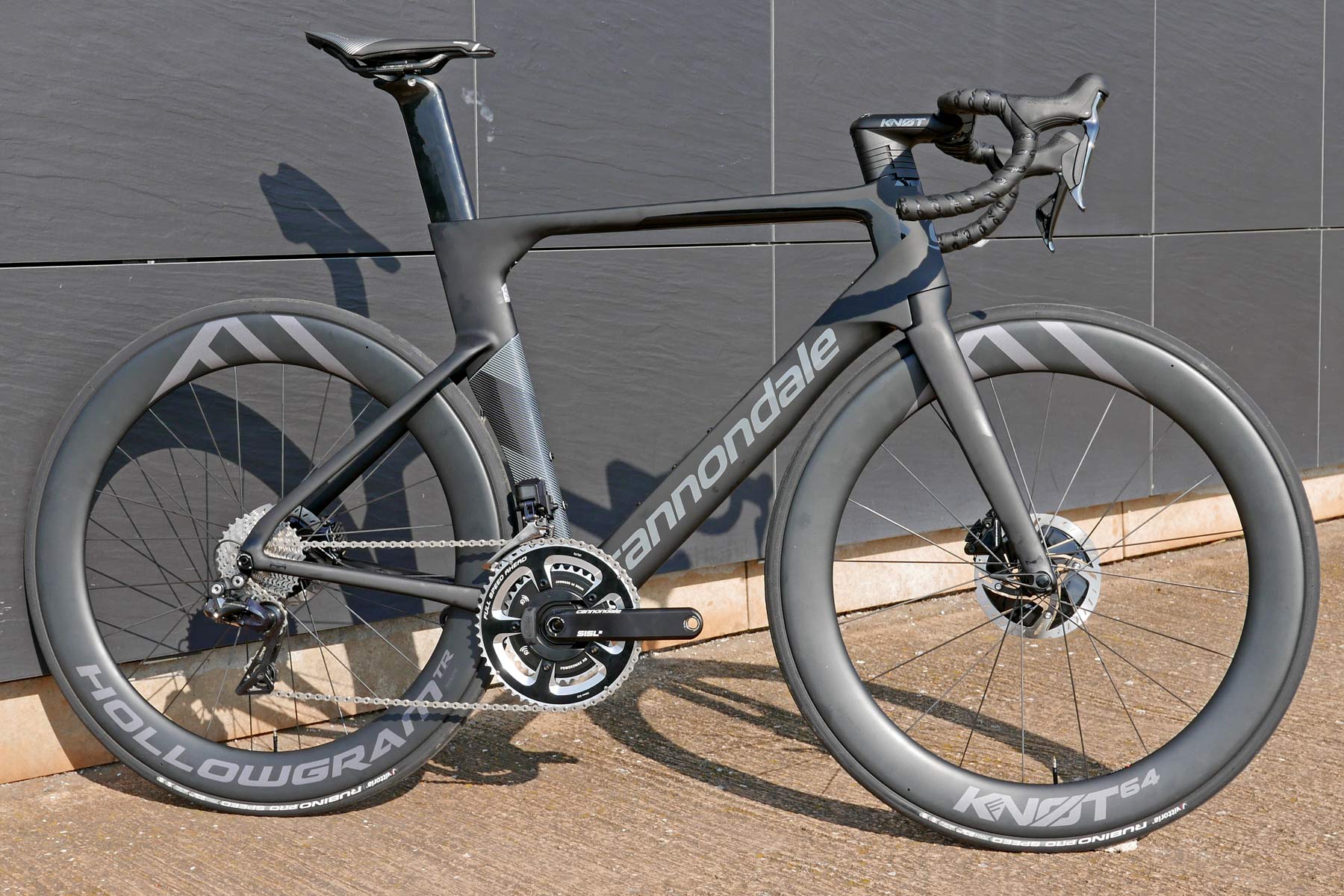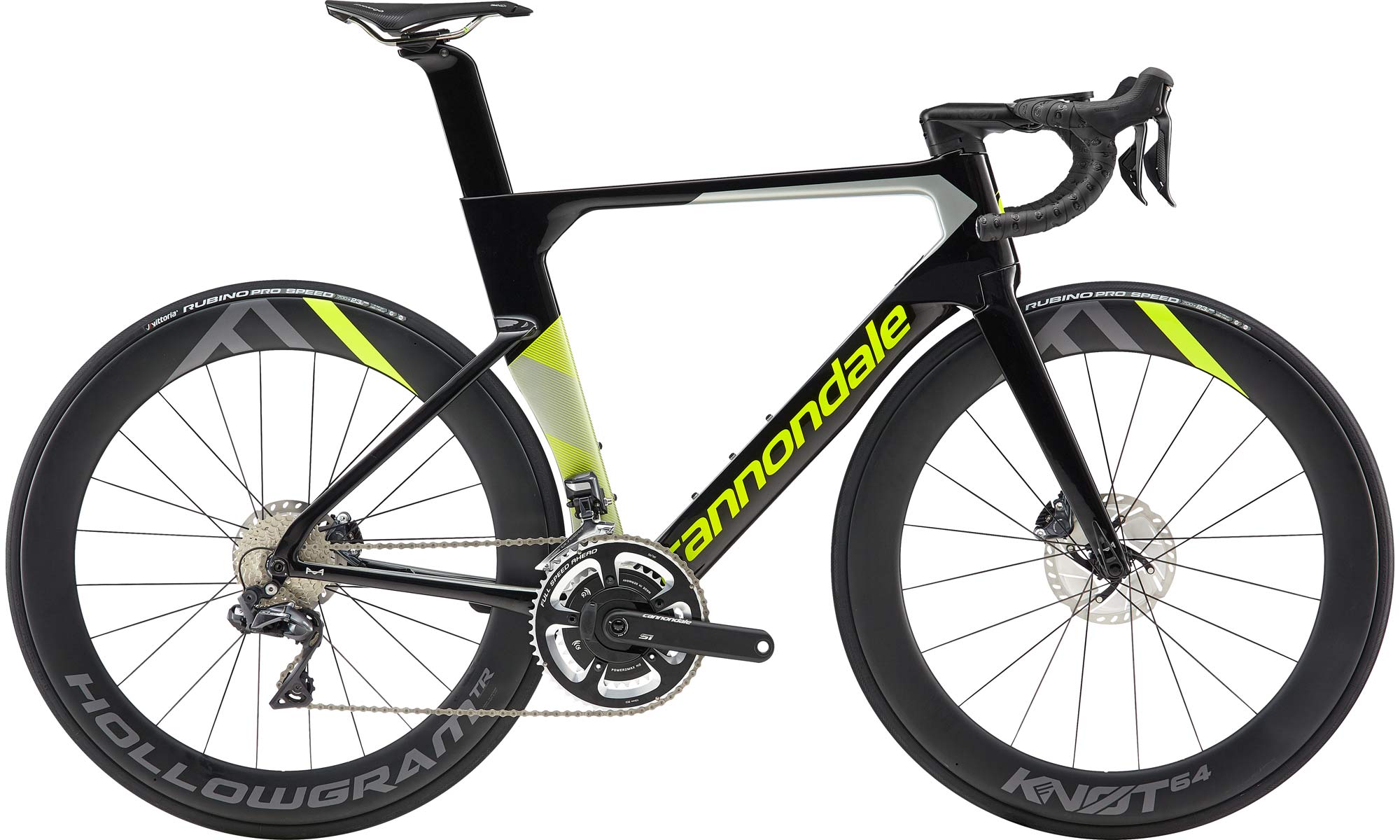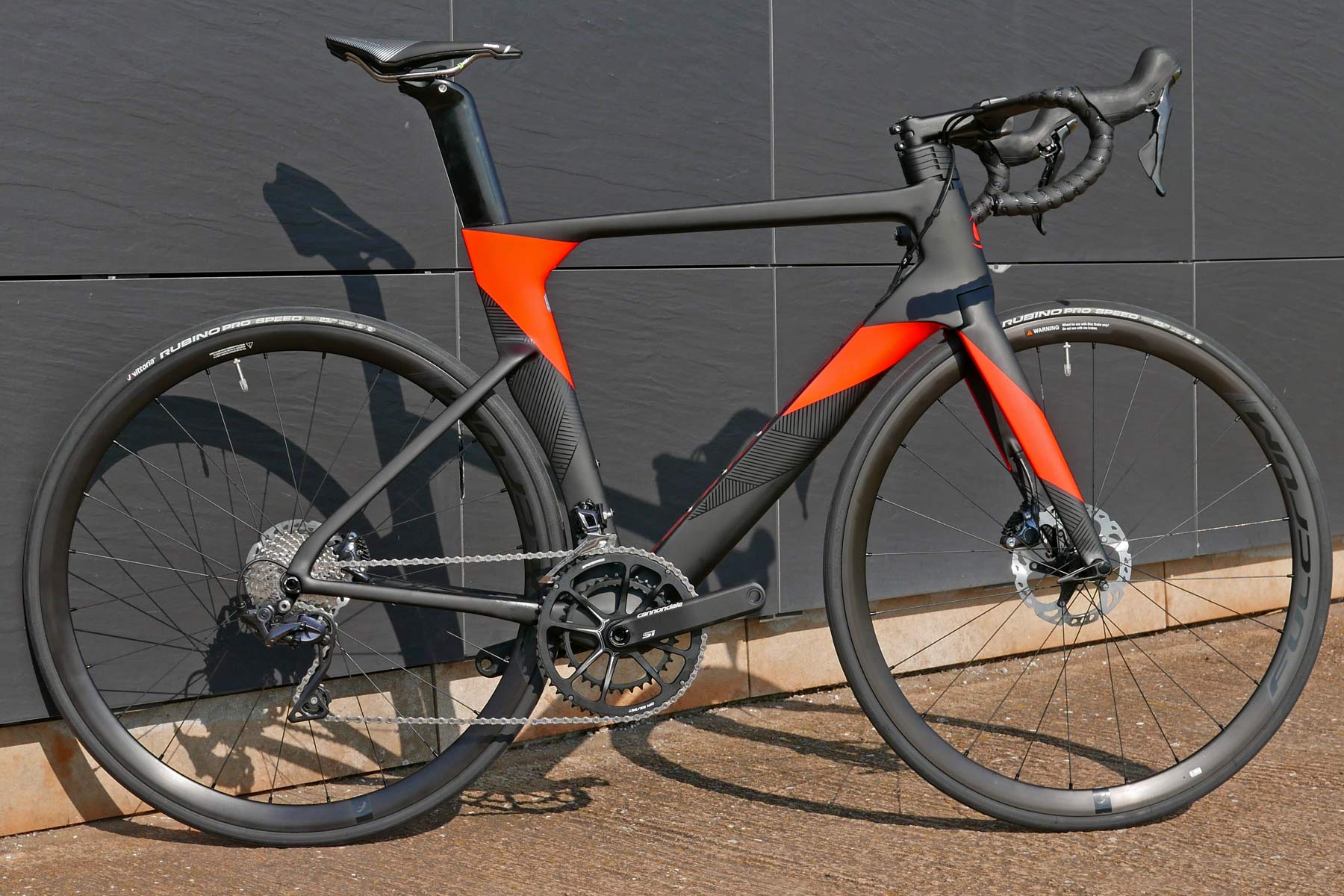With the Tour de France – the big show for road bike debuts – just days a way, Cannondale has a disc brake-only carbon road bike to reveal – the all-new 2019 Cannondale SystemSix. We got a close-up look at the bike and its unique tech, plus some first rides. Cannondale are hesitant to call it an aero road bike, but it is aero claiming to be faster everywhere…
2019 Cannondale SystemSix carbon disc brake aero road
With what Cannondale says is “the least drag of any UCI-legal road bike on the market” they are claiming this is the “Fastest Road Bike in the World”. Cannondale has been oddly late to the aero road bike category, with their pro team riders for the most part racing on the all-around, lightweight SuperSix Evo. Well, except ever since last year’s Giro were we already saw what turns out to be final preproduction versions of this bike, wrapped in all-black decals.
Aero Bike Development Story
But Cannondale’s designers & engineers had been toiling away, in CFD & the wind tunnel, but also in data analysis to see when to swap over to the aero optimized bike. In a word, it’s anything below 6% average climbing where aero trumps weight, which means we should expect to see Education First – Drapac racing the SystemSix even in quite a lot of hilly stages as well. Basically from 15km/h and up aero drag provides more resistance that all others put together on a flat road. Beyond 6% climbs, the 1kg you can save going to a climbing bike saves energy, but that only really works for a mountain top finish, because this thing descends faster too. But don’t call it an aero bike…
Taking their Si systems integration approach to all-out road racing, the new SystemSix is more than just an aero road frame designed to cheat the wind.
Cannondale brought a new aero specialist onto their team to design the new road bike, but the first thing they really did was break down the six total forces resisting your bike going forward. Rolling resistance, to wheel bearing friction, drivetrain friction, potential energy (elevation), kinetic energy (acceleration), and finishing with aerodynamic drag.
They took an analytical approach to try to create a faster all around bike, ultimately coming up with an integrated solution of six components: frame, fork, wheels, seatpost, bar, and stem. Those all get KNØT naming in reference to wind speed measurements.
One of the biggest gains on an aero road bike inevitably comes down to the wheels. So Cannondale set out from the start to develop something unique here too, coming up with the unconventionally wide Knot 64s.
Aero Optimization & Yaw Weighted Drag
Everything deigned to work together to go faster, part of that was developing a way to quantify aero performance. Cannondale settled on what they are calling Yaw Weighted Drag which basically takes a huge amount of public yaw angle wind data, and plots its probability against a bell curve to establish the importance of performance at each angle. It is a simplification, and of course some people will ride in areas with differing wind conditions, but ultimately made it easier to visualize the faster performance Cannondale was aiming for as an all around race bike.
Breaking that down they claim the new SystemSix outperforms every other aero road bike on the market, saving from 6W vs. a trek Madone, up to 23W vs. a Scott Foil, even 50W compared to a typical lightweight-focused bike.
If you want to look at some of that aero performance of the SystemSix, Cannondale has also added similar Augmented Reality functionality with the View app like they did on the recent F-Si & Lefty Ocho introduction.
“SystemSix is the result of a ground up design where each element is optimized in pursuit of speed,” says Nathan Barry, Cannondale’s aero-specializing Design Engineer. “Aerodynamic drag is the single greatest resistive force that riders have to overcome so it is important to everyone, not just racers. SystemSix delivers more speed, to more riders, more of the time.”
Frame & Fork Tech Details
Besides building an overall faster, more aero road bike the SystemSix gets down into the details. One of the big things is wider tire clearance not just for the 26mm rubber spec’ed on the complete bikes, but up to 30mm tires with plenty of space around for even the roughest road surfaces.
The frame gets tailored, truncated airfoil profiles that factor in air transiting from the part of the frame ahead of it, but also to how moving parts like wheels and the rider affect it as well. That means it isn’t all Kamm tails or pure aerofoils, but a wide range of shaping throughout.
One of the most noticeable design is the fins (called a chine) to control airflow off the fork to the frame smoothly. Oh, and the lack of cables, with an easy-to-service internal cable routing that puts hydraulic lines and Di2 wires entirely inside via a chamber open at the front of the headtube.
An interchangeable Switchplate on the top of the downtube lets the bike get an easy-to-reach Di2 control box, or it can serve for mechanical shift routing (that doesn’t readily work in the aero fully internal routing solution.)
Like we saw back at the Giro, the bike gets standard bottle bosses, plus a lower more aero position if you are only going to run a single bottle.
We also noticed on the pro bikes, the use of Speed Release open dropouts for faster race wheel changes. The wheels use standard 12mm thru-axles, but a 10mm slot on the axle drops out of the same sized slots on the frames, so the axles don’t need to be fully removed. Double leads on the threads also mean a faster first engagement when threading the wheel back in.
All that and the frame promises pro race drivetrain stiffness in hi-mod or standard carbon construction, backed by thin enough seat and especially chainstays to allow vertical deflection to prevent harsh riding.
The new SystemSix frame claims a weight of 981g for the bare medium frame, plus 65g for all the small hardware parts, and another ~70g in paint. (The smallest is 87g lighter, the largest 104g more.) That means the actual frame weighs about 1116g in a 56cm.
The fork itself of course gets asymmetric legs, to solve its disc only use. It continues the stealthy internal routing, and builds in the 50° steering stop that allowed Cannondale to put Di2 wires and hydraulic lines inside without overly complicated solutions.
Knot64 wide aero carbon wheels
One of the biggest gains on an aero road bike inevitably comes down to the wheels. So Cannondale went all in developing a wheelset optimized for aero performance with a wide tire comfort and rolling resistance benefits.
The unique wheels get a wide for road racing 21mm internal rim bed designed to turn a 23c tire into a real 26mm wide profile overall. That’s where the aerodynamics are actually the best, with a rim that is actually 32mm wide at its biggest point, and 64mm deep.
Developed to present an ideal aerofoil profile at the front of the bike, Cannondale actually licensed a patented concept from HED that is not actually about the rim design or depth, but the angle at which a line tangent to the tire’s curve and that of the rim intersect. By doing so, Cannondale could spec that 23c (really 26mm wide in the end) tire that remains much narrower than the overall rim to get ideal airflow from tire across the rim across a real world range of yaw angles – where a narrower rim or wider tire would normally create more turbulence and airflow separated from the rim as you rode.
Besides working well with that (still) narrow 26mm overall tire, because of the wide rim shape you don’t see much loss in aero gains with a 25c/28mm wide tire (still apparently beating out most other aero wheels on the market). Interestingly, in our rides together, it looked like Cannondale’s own aero engineer was himself riding the wheels with this wider 25c/28mm setup. The Knot64 wheels aren’t super light, but for that wide & deep of a profile, their 1642g weight isn’t bad either (765g front, 877g rear).
Knot aero seatpost
The bike gets a surprisingly deep & narrow Knot seatpost. It offers a good bit of saddle adjustability, and works together with an integrated wedge-style seatpost clamp. Its design though focused around providing smooth air movement with a narrow aerofoil shape where air is being compressed and sped up around spinning legs.
Knot SystemBar integrated bar & stem cockpit
Delivering on the concept of a low drag once-piece bar & stem, but retaining adjustability, the Knot SystemBar mixes a carbon bar to an alloy stem in the two-piece integrated system. It delivers 8° of adjustment to fine tune the angle of the deep, flat carbon bar top, while also including a forged aluminum stem with a hollow section where cables can be routed internally.
Cables underneath get covered with a composite guide that directs them down into the open chamber at the front of the headtube. The stem also gets some trick integrated spacers underneath that help guide the cables, but can be popped on and off without having to reroute/open up any cable loops. In the end that doesn’t give too much range of adjustability because the steerer needs to be cut below the top of the stem, but it is a bit more serviceable.
Powermeter Spec
Power2Max spiders come pre-installed on the Hi-mod models of the SystemSix. You get cadence measurement for free, but have the option to ‘activate’ the strain gauges inside direct from Power2Max for $490€. Cannondale says it was about making power meters more accessible, so they deliver the hardware to make it possible, and users have the choice to pay Power2Max or not to activate the software side. Some might balk at the idea of paying to turn on a technology already on the bike. But Cannondale looks at it as them providing the hardware at no extra cost to the rider, then the technology & software that is where most of the power meter development costs go to can be activated from Power2Max over Bluetooth for a lower cost than buying the power meter from the start. Win, win?
Complete Bike Specs, Pricing & Availability
The new SystemSix comes in three complete specs, plus a $4200 frameset (with just frame, fork & seatpost) for the top high modulus frameset. Two more complete bikes use standard modulus frames to bring the price down. All of those (except the women’s) come in a seven size range (47-62cm.) Cannondale is also looking to improve rider safety even on pro-level bikes, with all of these models getting a variable amount of reflectivity in their paint jobs.
The top spec is a $11000/10500€ SystemSix Mi-Mod Dura-Ace Di2 build that gets the fully integrated, internally routed groupset, plus the Knot64 aero wheels & Knot SystemBar, and the ready-to-activate Power2Max spider.
Next the SystemSix Hi-Mod Ultegra Di2 for $7500€ gets the Knot64 wheels, integrated Knot cockpit, Power2Max spider, and a full Ultegra Di2 drivetrain.
Then the only women-specific bike of the bunch, the SystemSix Hi-Mod Women’s gets a Dura-Ace mechanical groupset, the Knot64 wheels, Power2Max spider, but swaps in a Vision Metron bar setup with shorter stems, narrower bars, and women-specific saddle for $7500€, but only in three sizes (47, 51 & 54).
For the standard mod carbon bikes, the $6000/5800€ Dura-Ace build is the only to keep the wide aero Knot64 carbon wheels and their wide tire aero benefits. With a mechanical drivetrain setup, it also gets external routing from the bar into the downtube and features a more conventional Vision handlebar.
Below that a $4000€ a SystemSix Ultegra uses standard carbon, a standard bar, mechanical groupset, and gets a conventional 35mm deep Fulcrum alloy wheelset.
All of the bikes are slated for September 2018 retail availability.
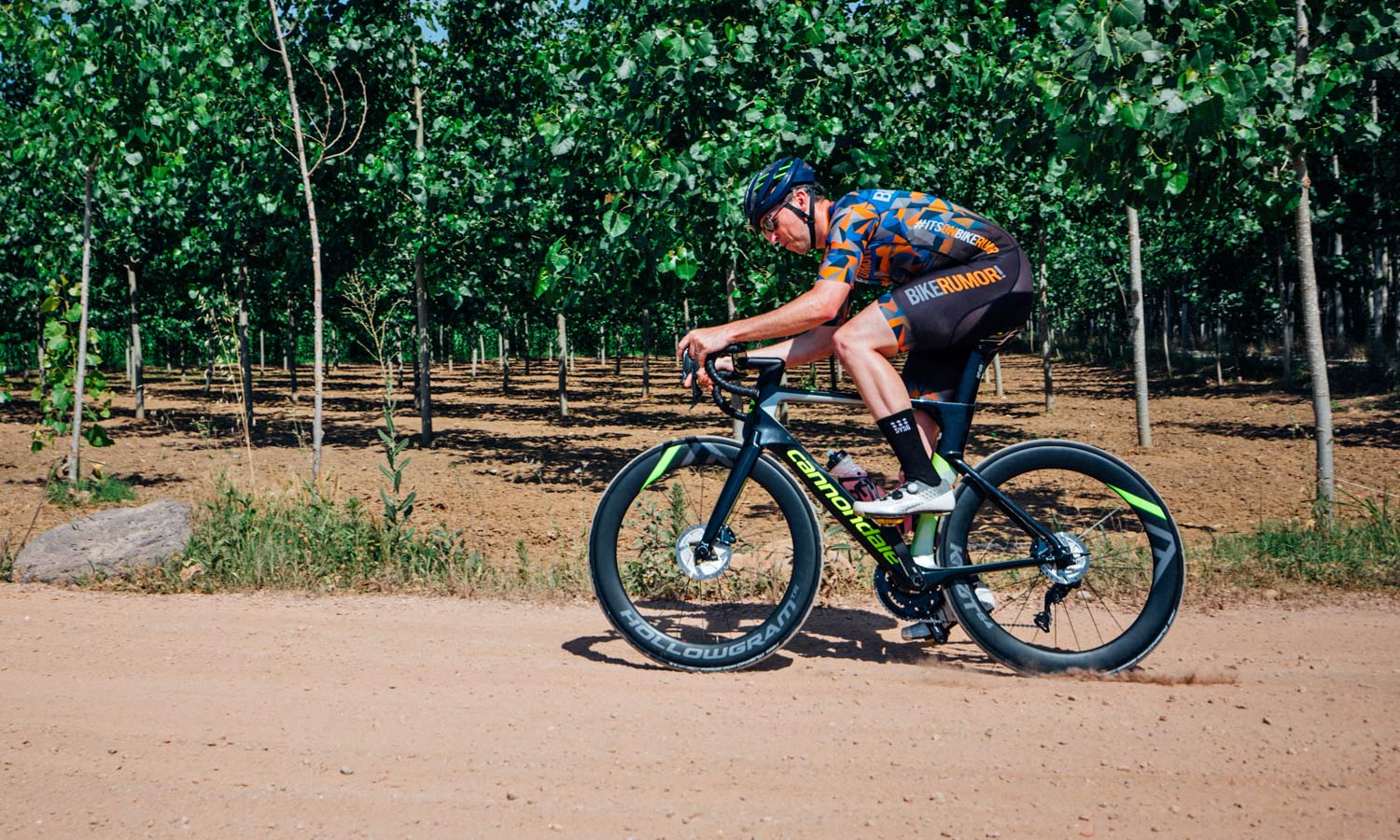
We’ll have a First Rides impressions review soon to give you a further look at the bike and our thoughts on how fast & comfortable it really is.
